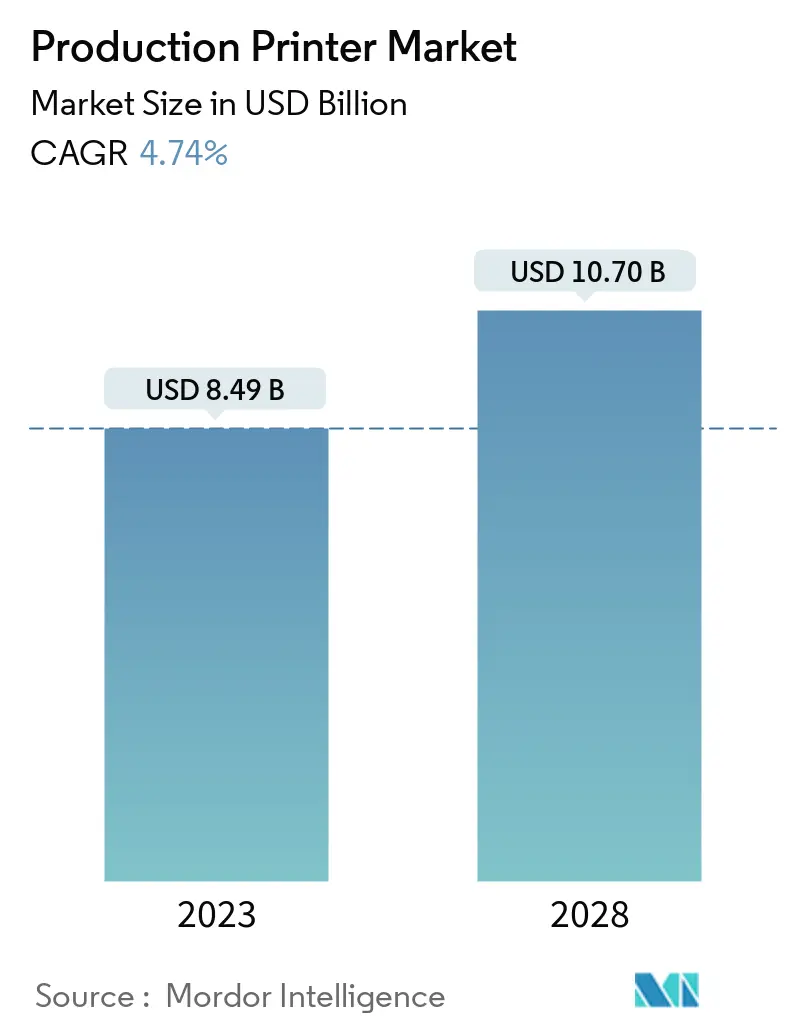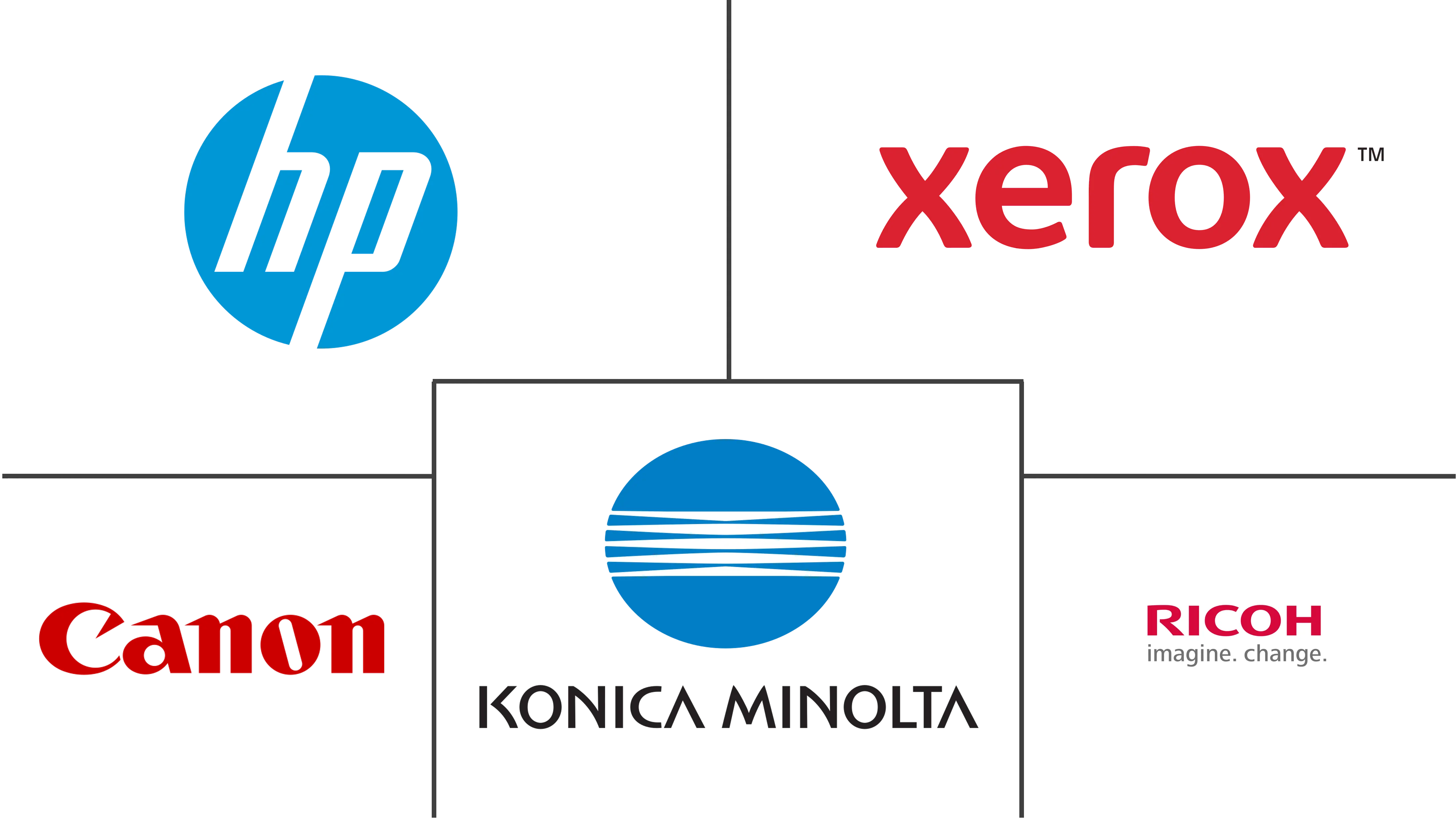Market Size of Production Printer Industry

| Study Period | 2018 - 2028 |
| Market Size (2023) | USD 8.49 Billion |
| Market Size (2028) | USD 10.70 Billion |
| CAGR (2023 - 2028) | 4.74 % |
| Fastest Growing Market | Asia Pacific |
| Largest Market | North America |
Major Players
*Disclaimer: Major Players sorted in no particular order |
Need a report that reflects how COVID-19 has impacted this market and its growth?
Production Printers Market Analysis
The Production Printer Market size is expected to grow from USD 8.49 billion in 2023 to USD 10.70 billion by 2028, at a CAGR of 4.74% during the forecast period (2023-2028).
New technology innovations, the growing number of profitable business models, and the continuing shift to just-in-time production are anticipated to fuel the market over the forecast period.
- Commercial printers are focusing on investing in digital and inkjet printing to offer customers wide-format and industrial printing applications. This indicates that digital production equipment must be profiled and calibrated for new materials, including ceramics, wood, vinyl, plastics, thin films, cardboard, textiles, glass, metal, paper, and more.
- Inkjet printing gained traction in recent years. There have been a few Continuous Feed (CF) inkjet installations at commercial printers globally. Some of them are Hansaprint in Finland, Zalsman in the Netherlands, Eversfrank, Haberbeck, Esser, and Walter Digital in Germany, Poligrafico Roggero & Tortia in Italy, ProCo, DG3, and Severn in the United Kingdom.
- Including customized marketing messages in promotional and marketing strategies is one of the drivers in the production printers' industry. This is creating a significant demand for personalized printing content, which is being catered to, by commercial printing companies that use digital printing technologies.
- Such technologies include variable data printing (VDP) that enables the customization of images, text, and graphics on each printed piece of their content. The short-run self-publishing industry's steady prominence results in high demand for digital printing due to its beneficial aspects, such as order flexibility, optimized stock handling, and minimization of time-to-market for printed content.
- The growing advertising needs of enterprises worldwide and extensive technological proliferation currently represent the key factors driving the market growth. Organizations are increasingly adopting commercial printers as they are more cost-effective and efficient for bulk printing.
- The global industrial sectors have all been influenced by COVID-19, which has altered the dynamics. The market for digital printing is no exception and has suffered greatly due to consumers' disinterest in the sector. The constrained regulation of movement has impacted every area of their operation. Due to unexpected shutdown restrictions everywhere in the world, the printing sector was forced to shift its emphasis to online transactions and develop new printing technologies and tactics. Since physical stores have been down for months, the only option to draw customers is online. An increasing number of clients may now contact businesses wherever they are, thanks to the trend of online communication. Additionally, even though the production printing sector is experiencing significant issues, the overall economic picture is gradually improving.
